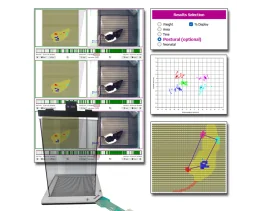Authors
Xanthos DN, Beiersdorf JW, Thrun A, Ianosi B, Orr-Urtreger A, Huck S, Scholze P
Lab
Department of Neurophysiology, Center for Brain Research, Medical University of Vienna, Austria
Journal
Neuropharmacology.
Abstract
Nicotinic receptors in the central nervous system (nAChRs) are known to play important roles in pain processing and modulate behavioral responses to analgesic drugs, including nicotine. The presence of the ?5-neuronal nicotinic accessory subunit in the nicotinic receptor complex is increasingly understood to modulate reward and aversive states, addiction, and possibly pathological pain. In the current study, using ?5-knockout (KO) mice and subunit-specific antibodies, we assess the role of ?5-containing neuronal nicotinic receptors in neuropathic pain and in the analgesic response to nicotine. After chronic constriction injury (CCI) or partial sciatic nerve ligation (PSNL), no differences in mechanical, heat, or cold hyperalgesia were found in wild-type (WT) versus ?5-KO littermate mice. The number of ?5-containing nAChRs was decreased (rather than increased) after CCI in the spinal cord and in the thalamus. Nevertheless, thermal analgesic response to nicotine was marginally reduced in CCI ?5-KO mice at 4 days after CCI, but not at later timepoints or after PSNL. Interestingly, upon daily intermittent nicotine injections in unoperated mice, WT animals developed tolerance to nicotine-induced analgesia to a larger extent than ?5-KO mice. Our results suggest that ?5-containing nAChRs mediate analgesic tolerance to nicotine but do not play a major role in neuropathic pain.
Source :

 Douleur - Allodynie/Hyperalgésie Thermique
Douleur - Allodynie/Hyperalgésie Thermique Douleur - Spontanée - Déficit de Posture
Douleur - Spontanée - Déficit de Posture Douleur - Allodynie/Hyperalgésie Mécanique
Douleur - Allodynie/Hyperalgésie Mécanique Apprentissage/Mémoire - Attention - Addiction
Apprentissage/Mémoire - Attention - Addiction Physiologie & Recherche Respiratoire
Physiologie & Recherche Respiratoire




































 Douleur
Douleur Système Nerveux Central (SNC)
Système Nerveux Central (SNC)  Neurodégénérescence
Neurodégénérescence Système sensoriel
Système sensoriel Système moteur
Système moteur Troubles de l'humeur
Troubles de l'humeur Autres pathologies
Autres pathologies Système musculaire
Système musculaire Articulations
Articulations Métabolisme
Métabolisme Thématiques transversales
Thématiques transversales Congrès & Meetings
Congrès & Meetings